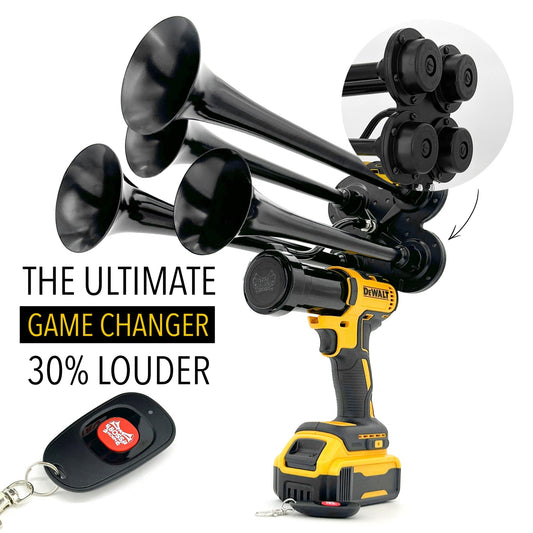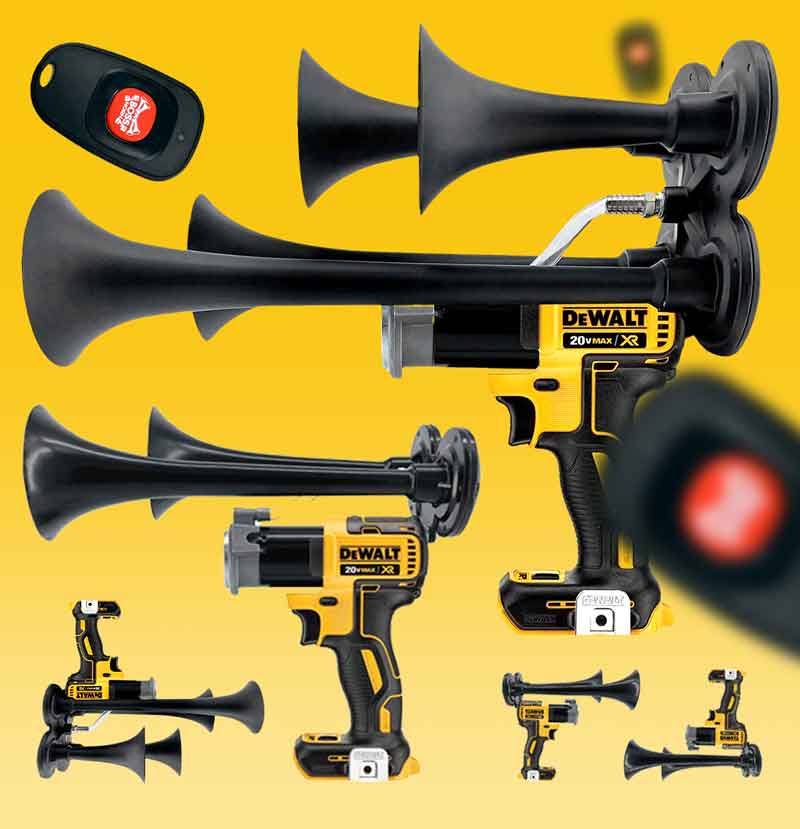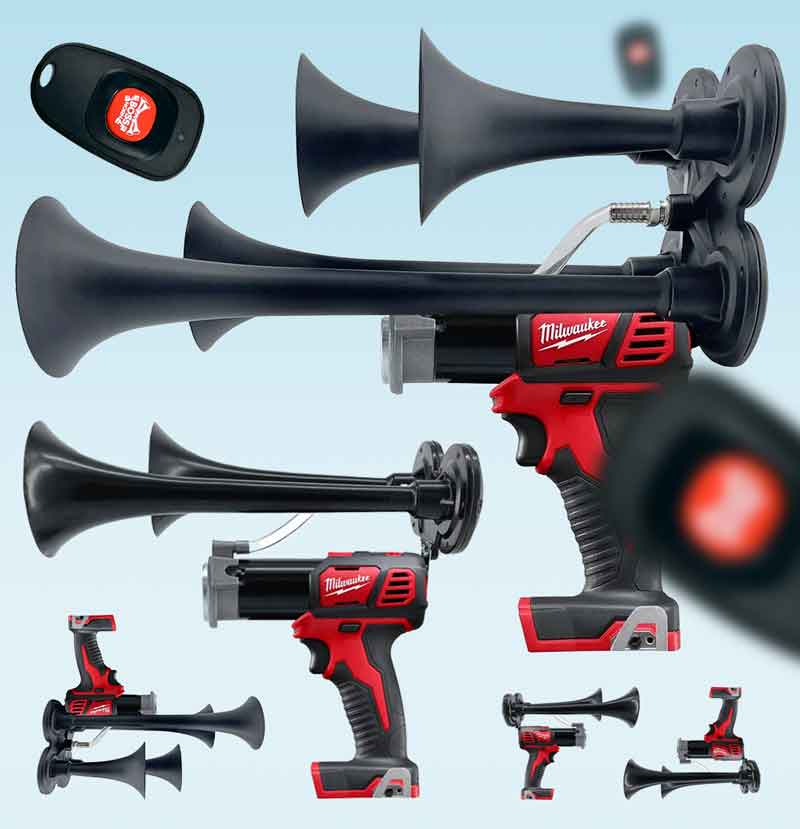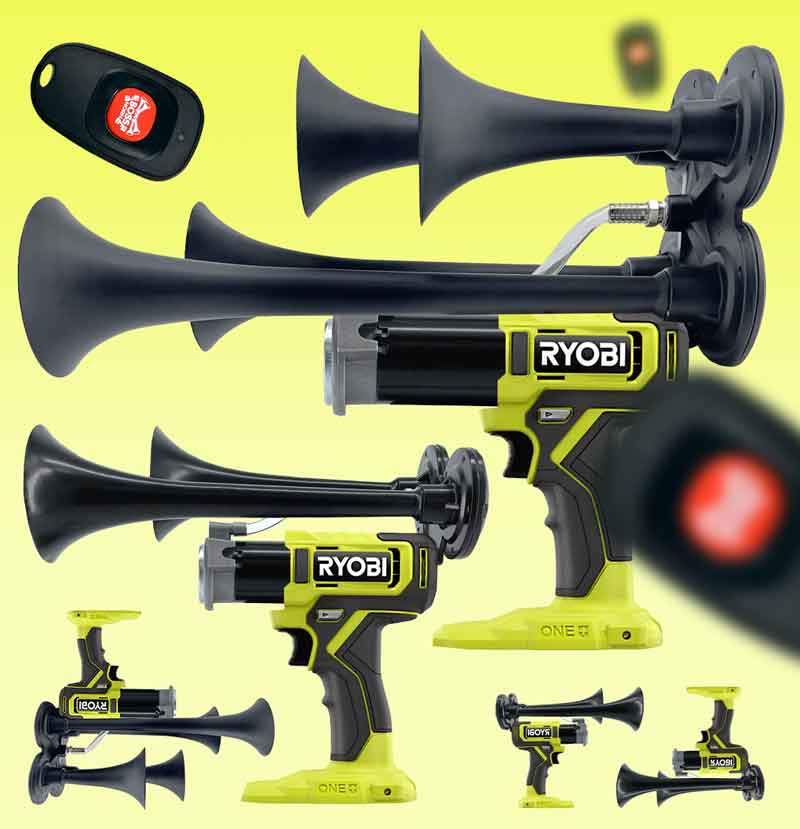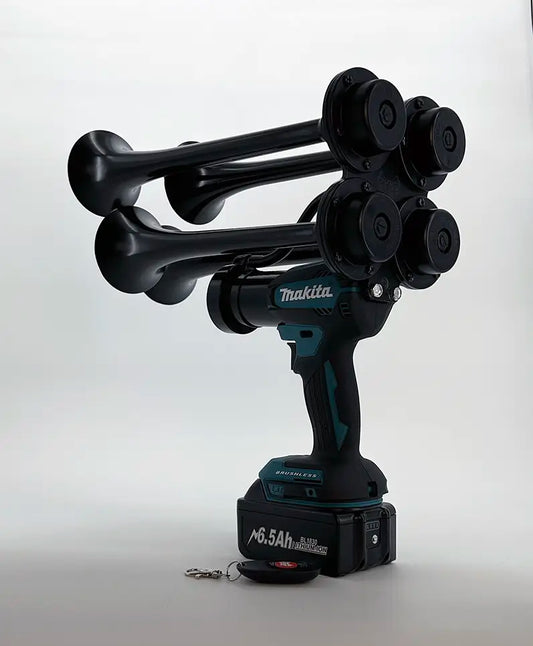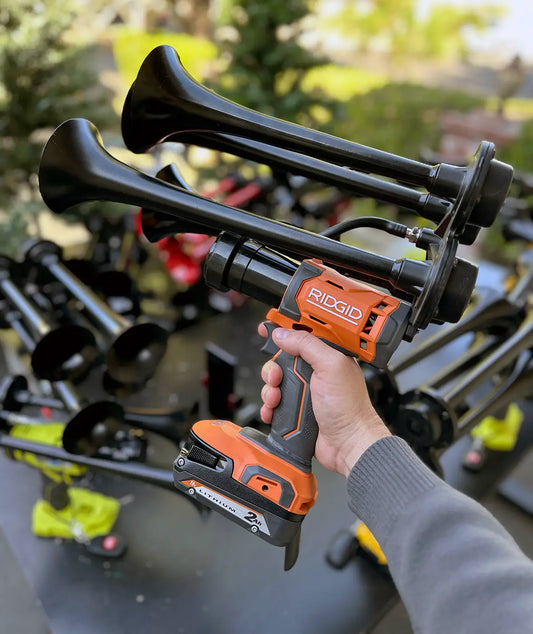Did you know that the sound of a train's horn can reach up to 150 decibels? To put that into perspective, a normal conversation typically measures around 60 decibels, while a rock concert may reach 120 decibels. The train horn's deafening noise serves an essential purpose - to signal the arrival or departure of a train, ensuring the safety of both passengers and pedestrians.
Train horns have a long and fascinating history that dates back to the early 19th century. Initially, these horns were powered by steam and used as a means of communication between train crew members. However, as rail transportation expanded and trains began to intermingle with city streets, the need for a horn that could be heard by others outside the train became evident.
In response to this demand, the pneumatic train horn was introduced in the late 19th century. This new type of horn utilized compressed air instead of steam, creating a much louder and more attention-grabbing sound. These horns quickly became a standard feature on trains, ensuring that the warning signals could be heard by pedestrians, motorists, and other trains alike.
Fast forward to the present day, and the train horn remains an integral part of railroad safety. Trains continue to traverse through urban areas, crossing intersections where they intersect with vehicular and pedestrian traffic. The blaring sound of the horn acts as a universal warning, alerting everyone in the vicinity of an approaching train.
However, the loudness of train horns has posed challenges as well. Noise pollution has become a concern for communities living near railway lines, where the constant blaring of train horns can disrupt sleep patterns, conversation, and overall quality of life. In response, various noise reduction measures have been implemented to mitigate these effects, such as constructing noise barriers along railway tracks or establishing quiet zones where trains only use their horns in emergencies.
Finding a balance between safety and minimizing noise pollution remains an ongoing challenge. Nonetheless, the train horn persists as an important safety measure, ensuring that people are aware of the presence of a train and avoiding accidents or mishaps on railroad crossings. As technology continues to evolve, we may witness advancements in quieter yet equally effective methods of signaling trains' approach.
Why are train horns so loud? Exploring the importance of a loud train horn for safety and communication.
Train horns are an essential safety feature on railways, providing a powerful and distinctive sound that alerts pedestrians, vehicles, and railway workers to the presence of an oncoming train. These immensely loud horns are designed to be easily heard from a considerable distance, effectively warning everyone in the vicinity of a moving train and preventing potentially catastrophic accidents. In this article, we will delve deeper into the reasons behind the loudness of train horns, their significance in ensuring safety along rail tracks, and the various components that contribute to their decibel level.
Train Horns: A Powerful Safety Device
Train horns are an essential component of railway safety, providing audible warnings to pedestrians, motorists, and other vehicles near railroad crossings. These horns, designed to be loud and attention-grabbing, play a crucial role in preventing accidents and saving lives on the tracks.
The Importance of Loud Train Horns
Train horns serve as an effective safety measure due to their loud and distinctive sound. Their purpose is to alert individuals and vehicles of an approaching train, especially in situations where visual cues may be limited or obstructed.
One of the main reasons train horns are loud is because sound travels differently outdoors compared to indoor spaces. The external environment, including ambient noise, traffic, and weather conditions, affects how far the sound can carry. Therefore, a loud train horn ensures that its warning is heard over these external factors, helping to avoid accidents and collisions.
Decibel Levels and Regulations
Train horns produce sound measured in decibels (dB). The decibel scale represents the intensity or loudness of the sound. The louder the sound, the higher the decibel level. Train horns are designed to be extremely loud, typically ranging from 96 to 110 dB at a distance of 100 feet.
To ensure that train horns meet safety standards and do not cause noise pollution, various regulations govern their use. For instance, in the United States, the Federal Railroad Administration (FRA) sets guidelines for train horn operation. According to these guidelines, train horns must emit a minimum sound level of 96 dB and a maximum sound level of 110 dB at 100 feet in front of the approaching train.
The FRA regulations also specify when train horns must be sounded, such as 15-20 seconds before reaching a public grade crossing. These regulations aim to ensure that train horns provide adequate warning to prevent accidents without causing unnecessary disturbance to nearby communities.
Statistics on Train Horn Safety
- According to data from the National Transportation Safety Board (NTSB), train horn usage has contributed to a significant reduction in railway accidents over the years.
- In 2019, train accidents at highway-rail grade crossings decreased by 9.2% compared to the previous year, partly attributed to the effective use of train horns.
- The NTSB reported that in the same year, 95% of public grade crossings had functioning warning systems, including train horns, contributing to safer railway operations.
- Studies have shown that the use of train horns can reduce accidents by up to 85% at railway crossings, emphasizing their crucial role in preventing collisions.
https://youtube.com/watch?v=IvElmVUXlkE
FAQ about Train Horns
1. What is the purpose of a train horn?
A train horn is used as an auditory signal by trains to warn pedestrians, vehicles, and other trains of their presence. This is crucial for ensuring safety and preventing accidents in railway crossings and other areas where trains operate.
- The purpose of a train horn is to warn others of a train's presence.
- Train horns are essential for safety in railway crossings.
- The sound of a train horn serves as an auditory signal.
2. How loud are train horns?
Train horns are designed to be extremely loud to ensure they can be heard over long distances and in noisy environments. They typically produce sound levels ranging from 110 to 129 decibels (dB), which is similar to the noise level generated by a chainsaw or a rock concert.
- Train horns can reach sound levels between 110 and 129 decibels.
- The loudness of train horns is comparable to that of a chainsaw or a rock concert.
- Train horns are specifically designed to be heard over long distances.
3. Are there any regulations regarding train horn usage?
Yes, there are regulations in place regarding train horn usage to ensure consistency and predictability for those who encounter them. These regulations are implemented by transportation authorities and may include specific requirements such as horn patterns, volume levels, and when and where the horn should be sounded.
- Regulations govern the usage of train horns.
- Transportation authorities enforce train horn regulations.
- Guidelines may include specific horn patterns, volume levels, and timing.
4. Do all trains use the same type of horn?
Although most trains use air horns, there can be variations in the design, sound characteristics, and specific horn patterns used by different train operators. Some trains may have multi-chime horns, while others may use single-note horns. However, regardless of the type, all train horns are designed to be loud and attention-grabbing.
- Trains can have variations in the design and sound characteristics of their horns.
- Different train operators may use different types of horns.
- All train horns are designed to be loud and attention-grabbing.
5. How far can a train horn be heard?
The audibility range of a train horn depends on various factors, including the environment and surrounding noise levels. In ideal conditions, a train horn can be heard up to several miles away. However, it is important to note that obstacles such as buildings, terrain, and weather conditions can limit the distance at which the sound can travel.
- The audibility range of a train horn can extend to several miles.
- Environmental factors and surrounding noise levels affect how far the sound can travel.
- Obstacles such as buildings and terrain can limit the distance at which the horn can be heard.
Overall, train horns serve a crucial safety function by warning others of a train's presence. They are designed to be loud to ensure audibility over long distances and in noisy environments. Regulations govern their usage to ensure consistency and predictability. While there are variations in the types of train horns used, all are designed to be attention-grabbing. The distance at which a train horn can be heard depends on various factors, including the environment and surrounding obstacles.
Conclusion:
- A very loud train horn can be incredibly useful in ensuring safety and alerting nearby pedestrians and vehicles of an approaching train.
- It serves as a crucial warning signal, especially at crossings and intersections, where visibility might be limited.
- The loudness of the horn can also deter individuals from engaging in risky behavior near train tracks and promote responsible behavior.
- Using a very loud train horn only once, instead of multiple times, reduces noise pollution and minimizes potential annoyance for nearby residents.
- Implementing advanced technology, such as adjustable sound levels, can further enhance the effectiveness and efficiency of train horns.
- Additionally, incorporating sound insulation measures can help mitigate noise pollution while still ensuring the horn's audibility to those in close proximity.
- Proper maintenance of train horns is crucial to ensure they function optimally, thereby preserving their effectiveness and reliability.
- Efforts to educate the public about the significance of giving importance to train horn signals should be undertaken to enhance safety measures.
Overall, very loud train horns are an indispensable safety feature that should be used judiciously to ensure the wellbeing of both train operators and the public. Their precise design, proper usage, and regular maintenance are vital to maximizing safety while minimizing noise pollution.






